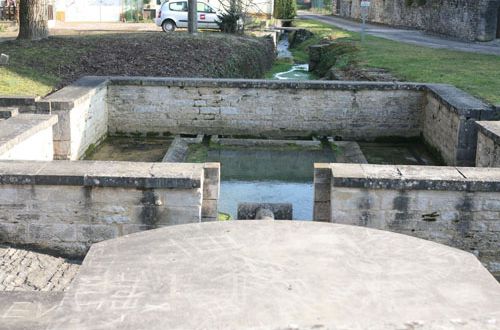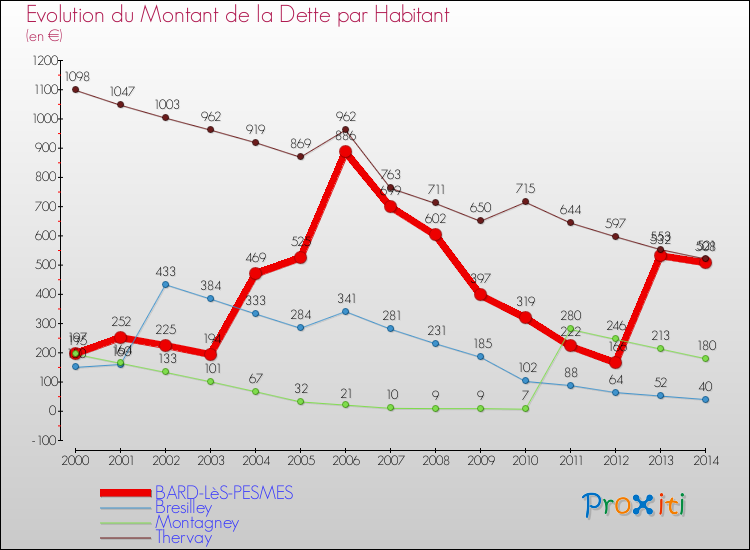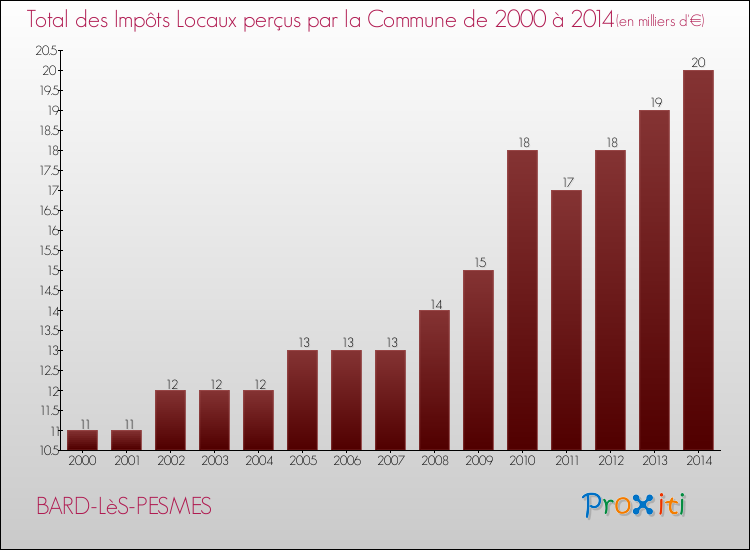Bard-lès-Pesmes
Bard- lès- Pesmes is a commune in Haute -Saône in the Franche -Comté.
Geography
Bard- lès- Pesmes situated at an altitude of 215 m above sea level, five kilometers east of Pesmes and about 30 km west of the city of Besançon (air line). The village extends to the south of the department, on a plateau slightly increased at the northern edge of the valley of Ognon.
The area of 5.21 km ² municipal area includes a portion of the lower Ognon Valley. The central part of the area is occupied by the plateau of Bard, which is on average 220 m. It is used for agriculture and is dewatered to Ognon by the brook Cassis south. To the northwest, the municipal area extends over a gently rising slope on the hills of the Chanoy (277 m), which is composed of Tertiary sediments. With 291 m you Gatis is achieved the highest elevation of Bard- lès- Pesmes in the adjacent Bois.
Neighboring communities of Bard- lès- Pesmes are Chaumercenne in the north, Montagney in the east, the south and Bresilley Malan and Pesmes in the West.
History
In the Middle Ages Bard belonged to the Free County of Burgundy and in the territory of the Bailliage d' amont. The local government had held the Lords of Bard, whose existence is attested since the 12th century. After they died, the rule underwent various changes of ownership, until she came to the Choiseul - Stainville. Together with the Franche- Comté Bard came with the Peace of Nijmegen in 1678 definitively to France. Today Bard- lès- Pesmes is a member of the comprehensive 18 villages municipal association Communauté de communes du Val de Pesmes.
Attractions
The church of Saint -Ferréol -et- Ferjeux was newly built in 1753 on the site of a previous medieval building. For rich room amenities include an altar of the old church, a pulpit from the 19th century and various statues from the 18th century. Two chapels were added in 1776 and 1784.
In the center are the former Templar House ( 16th century ), which was converted into a Hofgut in the 18th century, a wine farm in the Burgundian style of the 18th century, numerous farmhouses, many dating back to the 17th century, a dovecote (19th century) as well as two - Lavoirs Fontaine, who served previously as well, wash and livestock watering.
Population
With 126 inhabitants ( 1 January 2011) Bard- lès- Pesmes one of the smallest municipalities in the department of Haute- Saône. After the population had decreased significantly in the first half of the 20th century ( in 1886 311 people were still counted ), a slight population growth has been recorded since the early 1990s again.
Economy and infrastructure
Bard- lès- Pesmes was until well into the 20th century a predominantly by agriculture (crops, orchards, vineyards and livestock ) embossed village. Today, there are some establishments of local small businesses. In recent decades the village has been transformed into a residential community. Many workers are therefore commuters who engage in the larger towns in the vicinity of their work.
The village is situated away from the larger passage axes at a department road that leads from Chaumercenne after Ougney. The nearest links to the A36 motorway is located at a distance of about 13 km. Another road connection with Montagney.










